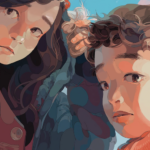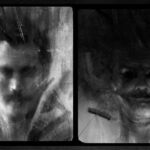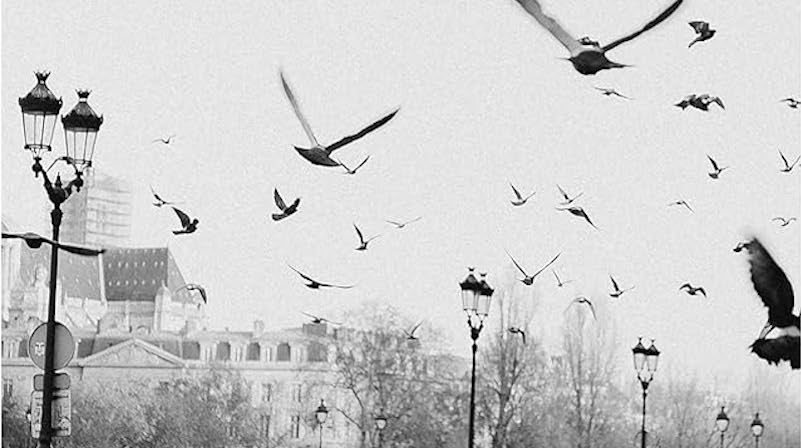Emotional Truths and Historical Lies in the Shadow of the Great War
Andrea Molesini on the Stories We Tell to Make Sense of the Past
The writing of a novel—particularly, a historical novel—is inevitably accompanied by a sense that one is betraying the truth, and therefore, oneself.
When writing a story set in a particular time and place, the narrator’s task is not to be true to the facts as recorded in extant source material. That is the job of the historian. What the novelist has to do involves continual “renegotiation” of fidelity to historical objectivity, a process that concedes space to the exploration of emotion. For emotions are what the tale leaves the reader; it is only through emotions that the author can court the truth, even though he or she knows that truth to be unobtainable. By stirring emotions, a story can fascinate the reader, thus becoming a mirror image of truth. The writer may betray the truth, but by writing about it, by courting it in the articulation of emotions, he dresses before it, a mirror—the sort of looking-glass through which Alice has to pass.
What lies behind a narrative built upon historical events? What still remains concealed in the crypts of History? Above all, what is it in the tale that manages to create emotional involvement?
The heart of any story is its characters. Always.
Precisely because we are so unknown to ourselves, we need to feel that we are participating in the emotions of others. Their suffering, their joy indicates one possible way of getting to know our own sufferings and joys. Emotional involvement without characters is impossible. It is through them that we participate; their deep contradictions resonate within us, who witness them play out their destiny. The contradictions within Anna Karenina, or Macbeth or King Lear are our own contradictions. Or rather, the mirror whereby we encounter contradictions that we did not know to lie within us until we find them exposed in the suffering soul of a character that has fascinated us. To achieve this end—to create personae who, on the printed page, are so vivid that the reader participates in what they are experiencing—the author has to draw upon the ferocious passion of his own involvement, rendered with linguistic skill and psychological insight.
In effect, any genuine, believable character is a real—a historic—character; he or she inhabits, and is inhabited by, a specific time and place. Any character that is not an individual but a type is, by its very nature, an artificial representation.
This is why every skilfully created character is more vivid for us than the people we encounter when we go to the office or to the supermarket. He or she is complete, even though contradictory—memorable precisely because of their mass of desires, ambitions and weaknesses, of cruelty and tenderness. And this is why they can break away from the specific historical context within which their story is set to take their place on a sempiternal stage, where they remain specific but not just part of the past. The sorrow and pain that leads to Anna Karenina’s suicide is that of every woman caught between her own passion and the restrictions and prejudices that have been part of life in all societies throughout history. In The Writing of Fiction, Edith Wharton observes: “The novelist’s permanent problem is that of making his people at once typical and individual, universal and particular.”
* * * *
If characters are imbued with their own individual life, they make choices; and in making those choices, they generate actions which, while participating in the flow of history, draw them into the elsewhere which is their fate. This is why Wharton stresses: “Verisimilitude is the truth of art, and any convention which hinders the illusion is obviously in the wrong place.” What is involved here is not merely accuracy in details of setting and clothing; it is the recreation of an atmosphere. One must make the reader conscious of sounds and smells that have gone forever, of long-forgotten ambitions and terrors. With their specific ambitions and fears, men, women and children whose social conventions are no longer our own must not only be brought to life, but given life and soul.
In writing the novel Not All Bastards Are from Vienna, I had to tackle a problem which is, I think, typical of any attempt to depict characters in a specific historical context (here, the Great War) and a specific setting (a small town in Northern Italy) facing specific circumstances (in this case, a military occupation that has devastating psychological effects upon both occupier and occupied). In such a situation, each of the characters sees their moral integrity, their previous certainties, under threat. The story takes place in a rural environment within a nation where peasants still outnumber factory workers, and the narrator is a 17-year-old youth who during the course of the story will experience sex and jealousy, betrayal and the desire for revenge.
In a rural society metaphors are forged in a totally different manner to the way in which they are coined in our highly urbanised society. For example, at a point towards the beginning of the book a light drizzle revives all the smells of the countryside—the plaster on the walls, farmyard manure, the scent of wet grass—and Paolo, the young narrator, says: “The darkness was as dense as the breath of cattle.” A simple, basic, simile, but certainly not one that would occur to the modern-day youth of Rome or Venice, London or Berlin—the damp richness of cattle’s breath forms no part of their lived experience. Indeed, for many urban adolescents, cows and bulls are a mere abstraction, the breath of animals part of an ancient world far distant from an urban landscape that suggests very different demons and angels. That one detail is a mirror of the whole, like the atom of a universe.
When the story is played out in a historical setting that is of immense resonance—such as the Napoleonic Wars, the American Civil War or the Great War—then the author faces a hidden danger that is often overlooked: the historical prejudices that have set up house within his own mind and that of his readers. For it is always true that the prejudices of today differ from—conflict with—those of yesterday, any yesterday. For example, democracy has not always been viewed as it is now in the West—that is, as the best possible form of government. Furthermore, we don’t even realize that what we think in such cases is a prejudice, something that we take for granted and are not willing to challenge. Jorge Luis Borges, the great poet of Buenos Aires, a truly original mind, dared to say: “Democracy is a superstition based upon statistics.” Though here, paraphrasing Eduardo De Filippo, the Neapolitan playwright, one could add: “Superstitions may be for the ignorant, but it’s bad luck to trash them.”
If the novel aims to communicate some truths regarding the joys and fears that are an integral part of our participation in the great spectacle of human action, it must impose an original vision, even if this offends readers. Think for example, of the notion of the “White Man’s Burden,” with its view of “sullen peoples, half-devil and half-child.” Taken for granted by Victorian/Edwardian society, it would be rendered ridiculous and untenable precisely because of a First World War which saw legions of whites and “coloured peoples” from the most varied of regions of the world mown down by the same machine guns, united in life and in death by the same courage and the same terror, the same rations and the same wretched living conditions.
In storytelling one has a responsibility both to the spirit of the age one is trying to depict and to the individual manifestations of that spirit, which lives through and conceals itself in, the characters. The story of one man is not a ring in a chain but one ring that fits one finger. Hence a novel of any value must be concerned with that ring and that finger. This is the one constant truth of nature: every living thing—be it a man, an oak tree, a ladybird—is absolutely unique.
In his ABC of Reading, published in 1934, Ezra Pound observes, “Literature is news that stays news.” The goal of any artistic depiction of July 28th, 1914 is to communicate to our present—the eternal present of individual humans who cannot articulate their identity, their here-and-now; who are continually striving to find their place within the destiny of the species—how this “July 28th, 1914” is always lying in wait for us. Like a bathroom mirror, it searches us out and judges us. The fact is that we human beings live in a far from mystical cloud of unknowing. We do not know who we are, nor where we come from. Above all, we do not know where we are going—we never have. A gypsy curse goes: “May all your wishes come true!”
We carry this unknowing around with us. If, for the sake of argument—and convenience—one excludes the Yugoslav wars, we could say Europe has enjoyed 70 years of unbroken peace thanks largely to the threat of nuclear annihilation. And the result is that we somehow believe ourselves protected against the temptations of war. But in doing so, we underestimate the power of stupidity, the force which—in the future as in the past—will take us by surprise. We do not know for certain, but we have some vague sense of the maelstrom simmering below the surface of things; the hidden ruptures in our individual and collective psyche. We like to think that we live in an interconnected world, a place so well-informed that it will be able to avoid the pitfalls of the past.
Of course, history never repeats itself verbatim. How could it? But we should never forget that we have always been “sleepwalkers,” given that the eras in history which were even vaguely tolerable have been so few and far between. The most recent of these, enjoyed by the tiny part of the world made up of Western Europe, began in May, 1945. But who, now that 70 years have passed since the Liberation of Europe from the Fascist nightmare, does not have some suspicion that this lucky moment might be coming to an end? We just do not know.
In a very touching letter of condolence to the sister of his great friend, the mathematician Michele Besso, Einstein wrote: “Michele left this strange world of ours shortly before myself. That means nothing. Not for people like us, who believe in physics and know that the distinction between past, present and future is nothing other than a stubborn illusion.” That may well be the truth, but human beings are born not to understand but rather to live in “this strange world of ours.” For all of us, one necessary part of living is the recounting of life, even if the stories that emerge have little to do with what actually happens.
A story is the mirror of the great spectacle of the world; it depicts but does not decipher. And even less does it try to explain “what it all means.” So telling a story depends not so much on an ability to understand as on the ability to be moved, to feel emotions. On the contrary, recounting History is predicated upon making us understand what happened. However, ultimately, the emotional approach could—I stress, could—be more efficacious than that based upon rationality; a story could be more effective than an essay, emotions more telling than reflection. Obviously it would be foolish to argue that Christopher Clark’s The Sleepwalkers tells us less about the reasons for the First World War than do the numerous novels on the subject. They embody very different approaches, and each reader must decide which, at that particular moment in his or her life, is the approach they are looking for. But the fact remains that the Great War does mirror our here and now. And this is more than just a rational deduction; it is something we feel. The Great War is a ghost that continues to haunt us.
It is art, and primarily literature—be it poetry or novels—which has the task of re-asserting Einstein’s claim that “the distinction between past, present and future is nothing but a stubborn illusion.” The truth of that observation is something we have always known instinctively, perhaps because we have always been sleepwalkers in search of sense and meaning. Yes, that is what we are: searchers after meaning and significance, even if we are often unaware of the fact. What holds at bay the shadows awaiting us all is that search, our insatiable curiosity and desire to learn.
Featured image Otto Dix’s war sketches.




















